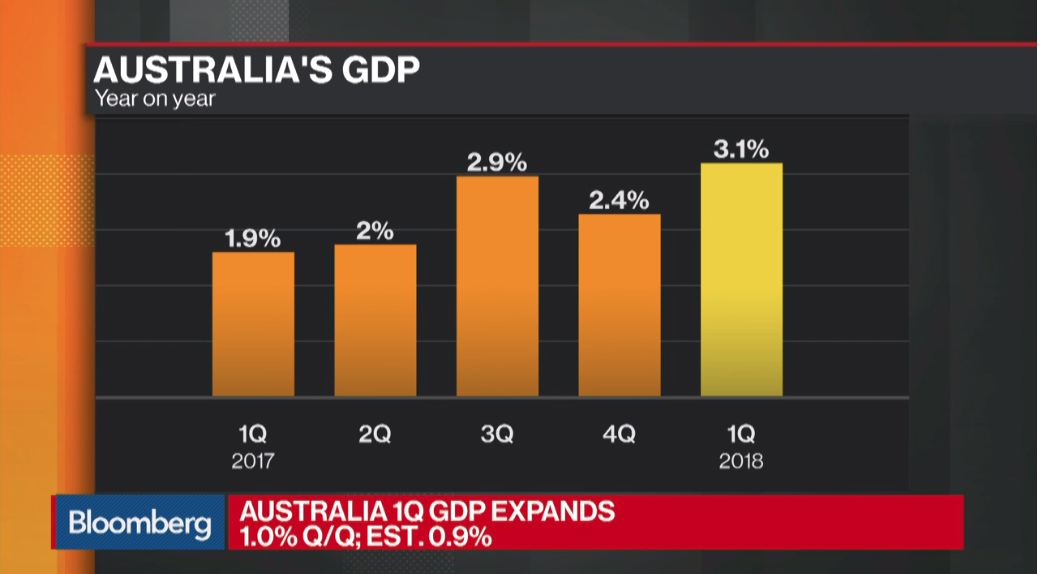Business
Local SEO Tactics – Getting Your Aussie Business Found Locally

When it comes to local SEO, it’s crucial for you to implement the right tactics in order to ensure that your business is easily found by potential customers in your area.
With the majority of consumers turning to search engines to find businesses near them, having a strong local online presence is more important than ever.
Let’s discuss some key strategies and tactics that you should implement to improve your local SEO and get your business found by those who are searching for your products or services in your area.
Key Takeaways:
- Keyword Research: Conduct thorough research on local keywords to understand what potential customers are searching for in your area.
- Optimise Google My Business: Ensure your GMB profile is fully optimized with accurate business information, high-quality images, and regular updates.
- Create Local Content: Develop localised content that speaks to your community and their interests, while incorporating relevant local keywords.
- Obtain Local Citations: Get listed in local directories and review sites to increase your visibility and credibility in your area.
- Engage with Local Community: Participate in local events, sponsor community activities, and engage with local influencers to boost your local presence.
- Mobile Optimisation: Ensure your website is mobile-friendly and optimized for local searches, as many consumers use their mobile phones to find local businesses.
- Monitor and Analyse: Regularly track and analyze your local SEO performance to make data-driven decisions and improve your local search visibility.
Mastering the Basics of Local SEO
Some of the most fundamental aspects of local SEO involve setting up your online presence in a way that makes it easy for potential customers to find you.
This includes optimizing your Google My Business listing, ensuring your NAP (name, address, phone number) is consistent across all platforms, and creating local-focused content with relevant keywords.
Setting Up Google My Business Effectively
When it comes to local SEO, Google My Business is a critical tool for getting your business found in local search results.
Make sure your profile is complete and accurate, including your address, phone number, and business hours.
Add high-quality photos that showcase your business and encourage customers to leave reviews.
Taking advantage of the features offered by Google My Business can greatly increase your visibility in local searches.
The Role of NAP Consistency in Local Search Rankings
NAP consistency refers to the accuracy and uniformity of your business’s name, address, and phone number across all online platforms.
Inconsistencies can confuse search engines and potential customers, leading to lower local search rankings.
It’s crucial to ensure that your NAP information is consistent across your website, social media profiles, online directories, and any other platforms where your business is mentioned.
Leveraging Local Keywords and Content
Creating localised content with relevant keywords is essential for attracting local customers. Incorporate local keywords into your website copy, blog posts, and social media content to increase your chances of appearing in local search results.
Remember to focus on topics and keywords relevant to your local area, you can position yourself as a trusted resource for local customers and improve your visibility in local search rankings.
By mastering the basics of local SEO, you can significantly improve your chances of getting found locally and attracting more customers to your business.
Taking the time to set up Google My Business effectively, ensuring NAP consistency, and leveraging local keywords and content can positively impact your local search rankings and online visibility.
Optimising Your Local SEO with Online Directories and Citations
Not using online directories and citations properly can severely limit your local SEO potential.
These tools are essential for getting your business found locally, as they provide valuable backlinks and consistent NAP (name, address, phone number) information across the web.
Choosing the Right Directories for Your Business
When it comes to choosing the right directories for your business, quality over quantity is key.
Focus on reputable directories that are relevant to your industry and location. Make sure to claim and optimize your listings, providing accurate and consistent NAP information.
Additionally, look for directories that allow you to add detailed business descriptions and links to your website, enhancing your online visibility and credibility.
Best Practices for Managing Citations
Managing your citations is crucial for maintaining a strong local SEO presence.
Regularly audit and update your citations to ensure that the NAP information is accurate and consistent across all platforms. Be vigilant in monitoring for any inconsistencies or duplicate listings, as these can negatively impact your local search rankings.
Additionally, seek out opportunities to acquire new citations from authoritative websites, as this can further boost your local SEO efforts.
On-Page SEO Strategies for Local Visibility
Keep in mind that on-page SEO is crucial for improving your local visibility and increasing your chances of getting found by potential customers in your area.
By implementing the following tactics, you can optimize your website to attract local traffic and improve your local search rankings.
Incorporating Location-Based Meta Tags and Titles
When optimizing your website for local search, it’s essential to include location-based meta tags and titles on your web pages.
This includes incorporating your city, state, or region in your meta descriptions, title tags, and header tags.
By doing so, you are signaling to search engines that your business is relevant to local search queries, ultimately increasing your chances of being discovered by local users.
Additionally, including your location in your meta tags and titles can help your website stand out in local search results, making it more likely for users to click on your listing.
Strategically Using Local Keywords in Your Content
Another on-page SEO strategy for local visibility is strategically incorporating local keywords into your website’s content. Identify relevant local keywords that are specific to your business and incorporate them naturally into your website’s copy, including your homepage, product or service pages, and blog posts.
By optimising your content with local keywords, you are increasing the likelihood of your website appearing in local search results when users are looking for businesses like yours in your area.
Additionally, using local keywords in your content can help you better connect with your local audience and establish your business as a relevant and authoritative source within your community.
Off-Page SEO Tactics for Local Businesses
Unlike on-page SEO, which involves optimizing your website’s content and structure, off-page SEO focuses on external factors that can improve your website’s search engine rankings.
For local businesses, off-page SEO is crucial for increasing your visibility within your target area.
Here are some effective off-page SEO tactics that can help your business get found locally.
Building a Strong Backlink Profile with Local Relevance
One of the most important off-page SEO tactics for local businesses is building a strong backlink profile with local relevance.
Backlinks are links from other websites that point to your website, and they are a crucial factor in determining your website’s authority and relevance to search engines.
When it comes to local SEO, having backlinks from locally relevant and authoritative websites can significantly improve your local search rankings.
You can achieve this by reaching out to local businesses, organizations, and directories to secure backlinks, as well as creating shareable local content that naturally attracts backlinks from local sources.
Engaging with the Local Community Through Social Media
Another important off-page SEO tactic for local businesses is engaging with the local community through social media. Social media platforms are a powerful tool for building brand awareness and connecting with your local audience.
By regularly posting relevant and engaging content, interacting with your followers, and participating in local conversations, you can boost your online visibility and attract local customers.
Additionally, actively managing and maintaining your business profiles on popular local review sites and directories can also help improve your local search rankings.
Reviews and Ratings: The Local SEO Game Changer
After optimising your website for local search and claiming your Google My Business listing, the next crucial step in your local SEO strategy is to focus on reviews and ratings.
Customer reviews and ratings play a significant role in influencing the visibility and credibility of your business in local search results.
In fact, reviews and ratings are considered a game changer in local SEO, as they can greatly impact your rankings and click-through rates.
Encouraging Customer Reviews to Boost Local Relevance
Encouraging your customers to leave positive reviews and ratings on platforms like Google, Yelp, and Facebook can significantly boost your local relevance and visibility.
When potential customers search for businesses like yours in their local area, positive reviews and high ratings act as social proof, giving them the confidence to choose your business over competitors.
One effective way to encourage customer reviews is to simply ask satisfied customers to leave a review after a purchase or a positive experience with your products or services.
Remember, the more positive reviews you have, the higher your chances of ranking well in local search results.
Managing Your Online Reputation
Managing your online reputation is crucial for maintaining a positive brand image and credibility in the eyes of potential customers. This involves not only encouraging positive reviews but also addressing any negative feedback or complaints in a professional and timely manner.
When responding to negative reviews, it’s important to demonstrate empathy, take responsibility for any shortcomings, and offer solutions to rectify the situation.
Additionally, consistently monitoring and managing your online reputation can help you identify any potential issues before they escalate, protecting your business from reputational damage.
Advanced Local SEO Techniques
To further improve your local SEO efforts, you can implement advanced techniques that will help your business stand out in local search results.
Here are some advanced local SEO tactics you can use:
- Utilising Structured Data Markup for Local Businesses
- Mobile Optimization for Local Search
Utilising Structured Data Markup for Local Businesses
Structured data markup, also known as schema markup, helps search engines understand the content on your website better.
By using structured data markup for your local business, you can provide search engines with specific details about your business, such as your address, phone number, business hours, and customer reviews.
This can significantly improve the visibility of your business in local search results, making it easier for potential customers to find you.
Mobile Optimisation for Local Search
With the increasing use of mobile devices, it’s crucial to ensure that your website is optimized for local search on mobile.
This includes having a responsive design, ensuring fast loading times, and providing a seamless user experience on mobile devices.
In addition, make sure your business information is easily accessible and clickable on mobile devices, as this can greatly impact your local search visibility.
By utilising structured data markup and implementing mobile optimization for local search, you can further enhance your local SEO efforts and increase the chances of your business being found by potential customers in your local area. These advanced tactics can give you a competitive edge and help you stand out in local search results.
Measuring Your Local SEO Success and Adjusting Strategies
Your local SEO efforts are best measured through tracking tools and metrics that give you insight into how well your business is performing in local search results.
By regularly monitoring your local SEO performance, you can identify areas for improvement and make adjustments to your strategies to better reach your target audience.
Tools and Metrics to Track Local Search Performance
There are several key tools and metrics you can use to track your local search performance. Google My Business Insights provides valuable data on how customers find your listing and interact with your business.
Google Analytics can help you track website traffic, user behavior, and conversions from local search. Local keyword ranking tools allow you to monitor your business’s ranking for relevant local search terms.
Additionally, online review monitoring tools can help you keep track of customer feedback and reputation management.
Continuous Improvement: Keeping Up with Local SEO Changes
Local SEO is not a one-time effort, but an ongoing process that requires continuous improvement. Search engine algorithms are constantly changing, and your competitors are consistently vying for the top spots in local search results.
You need to stay updated on the latest local SEO trends and best practices to ensure your business remains competitive.
Regularly audit and update your online listings, optimise your website for local search, and consistently seek out new opportunities for local citations and backlinks. By staying proactive and adaptable, you can maintain and improve your local search visibility over time.
Local SEO Tactics – Getting Your Business Found Locally
Presently, you have learned about the various local SEO tactics that can help you get your business found locally.
By optimising your website, creating local content, and managing your online reviews, you can improve your local search rankings and attract more customers in your area.
It’s important to consistently monitor and update your local SEO strategy to ensure that your business remains visible to potential customers in your area. By implementing these tactics, you can increase your online visibility and ultimately drive more foot traffic to your business.
Local SEO Tactics – Getting Your Business Found Locally
What is local SEO and why is it important for my business?
Local SEO is the practice of optimizing your website and online presence to attract more business from relevant local searches. It is important for your business because it helps you reach potential customers in your area and increase foot traffic to your physical location.
What are some effective local SEO tactics that I can implement for my business?
Some effective local SEO tactics include optimizing your Google My Business profile, utilizing local keywords, building local citations, and creating locally-focused content on your website.
How can I optimise my Google My Business profile for local SEO?
A: To optimise your Google My Business profile, be sure to provide accurate and up-to-date information about your business, such as your name, address, phone number, and business hours. You should also encourage customers to leave reviews and respond to all reviews, both positive and negative.
What are local keywords and how can I use them to improve my local SEO?
Local keywords are search terms that include geographic qualifiers, such as “near me” or the name of a city or neighborhood. You can use local keywords to improve your local SEO by incorporating them into your website content, meta tags, and business listings.
What are local citations and why are they important for local SEO?
Local citations are online mentions of your business’s name, address, and phone number. They are important for local SEO because they help search engines validate the existence and legitimacy of your business, which can improve your local search rankings.
How can I create locally-focused content for my website?
To create locally-focused content for your website, consider writing blog posts or articles that highlight local events, news, or activities in your community. You can also create location-specific landing pages and include testimonials from local customers.
What are some common mistakes to avoid when implementing local SEO tactics for my business?
Common mistakes to avoid when implementing local SEO tactics include neglecting to update your business information across all online platforms, keyword stuffing, and ignoring the importance of online reviews and reputation management.
Business
Uber Settles Taxi Court Battle for $272 Million

Uber has agreed to pay a whopping $272 million to resolve a protracted legal dispute with taxi drivers and their associations, marking a significant milestone in the ride-sharing and transportation industries. This large payment is a turning point for the ride-sharing sector as a whole, not just for Uber. This article explores the complexities of the lawsuit, the settlement’s effects, and the settlement’s wider implications for the provision of transportation services in the future.
The Origins of the Legal Battle:
The legal battle between Uber and the taxi industry has its origins in the early stages of the ride-sharing movement. Traditional cab operators and drivers expressed concerns about unfair competition and regulatory compliance as Uber and similar services gained traction. Legal challenges against Uber were brought by taxi associations all across the world. They claimed that Uber had violated transportation legislation, engaged in unfair business practices, and had lost revenue as a result of the growth of ride-sharing services.
The Legal Landscape:
Uber and the taxi industry were embroiled in a multi-front legal struggle that was being waged in different jurisdictions worldwide. The classification of Uber drivers, governmental monitoring of ride-sharing platforms, and the effect of technological innovation on established taxi services were at the center of these legal issues. The lengthy duration of the
Uber’s Response:
Uber remained true to its position as a tech platform that links drivers and passengers rather than a transportation provider governed by the same laws as conventional taxi services throughout the court dispute. Uber maintained that its cutting-edge business strategy, which offers more efficiency, affordability, and convenience than conventional taxis, signifies a paradigm shift in the way customers access transportation services.
Uber persisted in growing its global presence in spite of legal issues and regulatory scrutiny, revolutionizing urban mobility and changing the transportation industry. The business’s capacity to bounce back from setbacks and adjust showed how disruptive technology-driven innovation can be in established sectors.
The Settlement:
Uber and taxi drivers and their groups have achieved a historic settlement, with Uber agreeing to pay $272 million to end the case, following years of legal wrangling and courtroom fights. Even while the compensation is large financially, it also serves as a metaphor for Uber and the taxi industry’s reconciliation and compromise.
Key Terms of the Settlement:
The $272 million settlement contains provisions for regulatory compliance and collaboration between Uber and the taxi sector, as well as compensation for associations and taxi drivers impacted by the growth of ride-sharing services. The settlement also creates a framework for continued discussion and cooperation to address common issues and opportunities in the quickly changing transportation sector.
Implications and Future Outlook:
The future of ride-sharing and transportation services is significantly affected by the settlement reached between Uber and the taxi industry. It foreshadows a change towards increased collaboration and integration between conventional cab companies and online platforms, opening the door to a more peaceful and long-lasting ecology.
Furthermore, the settlement underlines how increasingly people are realizing how important it is to have fair and transparent regulations in the ever-changing transportation sector. It is becoming more and more difficult for regulators and policymakers to strike a balance between promoting innovation and defending the interests of all stakeholders as ride-sharing continues to transform cities and consumer behavior.
Finding a middle ground between protecting the interests of all parties involved and encouraging innovation.
To sum up, the $272 million settlement that Uber reached with the taxi industry is a critical turning point in the development of ride-sharing and transportation services. The end of this protracted legal dispute is indicative of a rising understanding that, in the face of technological upheaval, cooperation and compromise are essential. Urban mobility promises to be both inclusive and revolutionary in the future as Uber and other ride-sharing platforms develop alliances with conventional stakeholders and manage the regulatory landscape.
Business
Australia’s GDP Outlook Brightens with Better-Than-Expected Exports

Fears of an economic contraction have been dulled with the latest net export result exceeding expectations.
Ahead of December quarter national accounts on Wednesday, some economists were warning GDP may have gone backwards for the last three months of 2023.
Data released on Monday showed firms running down their inventories over the quarter in a result that was weaker than expected and anticipated to wipe one percentage point off the December GDP.
But Tuesday’s stronger-than-expected net exports outcome should add 0.6 percentage points to growth over the quarter and counter some of the drag from private inventories.
Government spending data, also released on Tuesday, tracked broadly in line with expectations, with public sector inventories to contribute 0.4 percentage points to growth according the ABS.
ANZ senior economist Blair Chapman said the larger-than-expected net exports addition and an increase in public sector inventories would offset weak private inventories.
The bank is expecting a weak 0.3 per cent increase over the quarter, a little higher than the 0.2 per cent market forecast.
Annually, it anticipates a 1.5 per cent lift.
Mr Chapman said such a result would line up with the Reserve Bank’s expectations of where growth should be tracking.
“But, while GDP may come in roughly around the RBA’s expectations, recent monthly consumer price index and labour market data have increased the risk that the RBA could ease sooner than our November expectation,” he said.
Treasurer Jim Chalmers was out warning of a weak growth report on Tuesday, though his remarks came before the final data releases that slot into GDP.
“There is enough around to trouble us about how the economy finished 2023,” he told ABC TV.
Despite the forecasts for the quarter, Dr Chalmers said Australia was in a better position than similar economies, which had gone into recession during the same time period.
“The December quarter in the Australian economy and indeed the global economy was quite weak,” he said.
“Remember, that was the quarter where we saw Japan and the UK both go into recession.
“We had an interest rate hike right in the middle of that December quarter, we had those persistent cost of living pressures that people are confronting in our communities and around our country.”
Business
Importance of Influencer Marketing for Leads

Utilizing influential individuals in the digital world to drive lead generation is a powerful marketing strategy that can yield significant results for businesses. In today’s crowded online marketplace, it’s essential for brands to understand the impact of influencer marketing and how to effectively leverage it to reach their target audience. Whether you’re a small startup or an established corporation, tapping into the power of influential individuals can skyrocket your lead generation efforts and boost brand awareness. In this blog post, we’ll delve into the secrets of influencer marketing and provide actionable insights on how to harness the influence of key individuals to drive leads and grow your business.
Key Takeaways:
- Identify the right influencers: It is crucial to research and identify influencers who align with your brand and have an engaged audience relevant to your target market.
- Build authentic relationships: Developing genuine connections with influencers is key to establishing trust and ensuring the success of influencer marketing campaigns.
- Provide value to the influencer: Offering value, whether it be through monetary compensation, exposure, or exclusive opportunities, is essential in building a mutually beneficial relationship with influencers.
- Create compelling content: Collaborating with influencers to create high-quality and engaging content that resonates with their audience is crucial for successful lead generation.
- Track and measure results: Utilizing analytics and performance metrics to track the success of influencer marketing campaigns is important in refining strategies and maximizing lead generation efforts.
Identifying the Right Influencers
Now that we understand the importance of influencer marketing, it’s crucial to identify the right influencers who can effectively help in lead generation. Identifying the right influencers is a meticulous process that involves understanding their influence, relevance, and various criteria for selection.
Understanding Influence and Relevance
On the quest to identify the right influencers, it’s essential to understand the concepts of influence and relevance. Influence refers to an individual’s ability to affect the opinions, attitudes, and behaviors of others. When it comes to influencer marketing, it’s important to identify individuals who have a strong influence in your target market. Relevance, on the other hand, refers to the alignment between the influencer’s content and your brand or product. The more relevant the influencer’s content is to your target audience, the more effective their influence will be in generating leads.
Criteria for Selecting Influencers
Criteria for selecting influencers include factors such as the size and engagement of their audience, the authenticity and credibility of their content, their alignment with your brand values, and their past collaborations with other brands. The size and engagement of an influencer’s audience are crucial as it determines the reach and impact of their influence. Authenticity and credibility play a significant role in gaining the trust of their followers, essential for lead generation efforts. It is also important to ensure that the influencer’s values align with your brand to maintain brand authenticity.
This careful consideration of the criteria for selecting influencers will ensure that you partner with individuals who can effectively drive lead generation through their influence and relevance. With the right influencers on board, your influencer marketing strategy will have the potential to reach a wider audience, build trust, and generate high-quality leads for your business. This process demands attention to detail and a thorough understanding of your target audience and brand values.
Crafting the Perfect Collaboration
Clearly, one of the most important aspects of influencer marketing is the collaboration between the brand and the influencer. Crafting the perfect collaboration is crucial for a successful influencer marketing campaign. It requires the brand and the influencer to work together seamlessly, aligning their objectives and ensuring that the partnership benefits both parties.
Establishing Clear Campaign Goals
For a successful influencer marketing collaboration, it is essential to establish clear campaign goals from the outset. Whether the goal is to increase brand awareness, drive website traffic, or generate leads, both the brand and the influencer need to be on the same page. Setting clear and measurable objectives will guide the collaboration and ensure that the campaign delivers the desired results. It is important to communicate these goals effectively and create a plan that aligns with the brand’s overall marketing strategy.
Creating Authentic and Engaging Content
With the rise of ad blockers and the decline of traditional advertising effectiveness, creating authentic and engaging content has become the key to capturing the attention of the audience. Influencer marketing offers brands the opportunity to connect with their target audience in a more authentic way. By collaborating with influencers who have a genuine connection with their followers, brands can create content that resonates and drives engagement.
Engaging content that feels natural and fits seamlessly into the influencer’s feed or platform will enhance the brand’s message and increase the likelihood of generating leads. It is essential to focus on storytelling and creating content that adds value to the influencer’s audience while also promoting the brand in a subtle and authentic manner. This approach will result in higher engagement and a more positive reception from the audience.
Optimizing and Scaling Your Influencer Campaigns
Your influencer marketing campaigns have successfully generated leads and increased brand awareness. Now it’s time to optimize and scale your efforts to reach even greater heights of success. Here’s how you can take your influencer campaigns to the next level.
Measuring Campaign Success
Your first step in optimizing and scaling your influencer campaigns is to measure their success. Use tools and analytics to track metrics such as engagement, click-through rates, and conversion rates. This data will help you understand which campaigns are most effective and which influencers are driving the best results for your brand. With this information, you can make informed decisions about where to allocate more resources and which influencers to continue working with.
Strategies for Scaling Up
Scaling up your influencer campaigns involves expanding your reach and impact. This can be achieved through collaborating with a wider network of influencers, investing in sponsored content, and increasing your budget for influencer partnerships. As your campaigns grow, it’s important to maintain the authenticity and credibility of your brand by selecting influencers who align with your values and resonate with your target audience.
Campaigns that successfully scale up will have a broader reach and generate even more leads and conversions for your business. However, it’s essential to carefully manage and monitor the increased activity to ensure that your brand’s image remains consistent and compelling.
Navigating Challenges in Influencer Marketing
Keep, influencer marketing is not without its challenges. As with any marketing strategy, there are hurdles that must be navigated in order to achieve success. Some of the most common challenges in influencer marketing include handling negative feedback and reputation management, legal considerations and compliance, and navigating the ever-changing landscape of social media platforms.
Handling Negative Feedback and Reputation Management
An influencer marketing campaign, no matter how carefully planned, can sometimes attract negative feedback. It’s important for brands to have a plan in place for handling criticism and negative feedback in a way that preserves their reputation and maintains the trust of their audience. Addressing negative comments or reviews in a timely and respectful manner can go a long way in mitigating any potential damage to a brand’s reputation. It’s also important for brands to work closely with influencers to ensure that any negative feedback is addressed appropriately and in a way that aligns with the brand’s values and messaging.
Legal Considerations and Compliance
For influencer marketing campaigns, there are legal considerations and compliance that must be carefully managed. From disclosing sponsored content to adhering to data privacy laws, brands must ensure that their influencer marketing efforts are in line with legal requirements. Failure to do so can result in legal trouble and damage to a brand’s reputation. It’s imperative for brands to work with legal professionals who are well-versed in influencer marketing and can provide guidance on compliance with relevant laws and regulations.
A comprehensive understanding of the legal landscape surrounding influencer marketing is crucial for brands looking to leverage influencer partnerships for lead generation. Ensuring compliance with data privacy laws, FTC guidelines, and other legal considerations is essential for building trust with consumers and safeguarding a brand’s reputation. Working with legal experts in the field of influencer marketing can provide brands with the necessary guidance and support to navigate these complex legal issues successfully.
The Power of Influencer Marketing for Lead Generation
The use of influential individuals in marketing campaigns can be an incredibly effective strategy for generating leads. By leveraging the existing authority and trust of these influencers, businesses can reach a wider audience and drive more conversions. In this digital age, where social media influencers hold significant sway over consumer behavior, incorporating influencer marketing into lead generation efforts is essential for staying competitive in the market. The most successful influencer marketing campaigns involve a careful selection of the right influencers, aligning their values with those of the brand, and creating authentic and engaging content that resonates with their followers. By following these influencer marketing secrets, businesses can maximize their lead generation efforts and achieve greater success in their marketing strategies.
FAQ
Q: What is influencer marketing and how does it work?
A: Influencer marketing is a strategy that involves leveraging influential individuals, or “influencers,” to promote a brand’s products or services to their audience. This is typically done through social media platforms, and influencers are chosen based on their following and relevance to the brand’s target audience. By partnering with influencers, brands can tap into their existing following and credibility to reach potential customers in a more authentic and effective way.
Q: How can influencer marketing help with lead generation?
A: Influencer marketing can help with lead generation by increasing brand visibility among a larger and more targeted audience. When influencers promote a brand’s products or services, their followers are more likely to trust and engage with the brand, leading to an increase in leads and potential customers. Additionally, influencers can create content that showcases the brand and its offerings, which can further drive lead generation through their authentic endorsement and recommendations.
Q: What are some key strategies for successful influencer marketing?
A: Key strategies for successful influencer marketing include identifying the right influencers for your brand, creating authentic and engaging partnerships, and measuring the success of your campaigns. It’s important to align with influencers whose values and audience align with your brand’s target audience. Additionally, creating a clear partnership that highlights the authenticity of the collaboration is essential, as well as measuring the performance of campaigns to optimize future influencer marketing efforts.
Q: How can a brand identify the right influencers for their influencer marketing campaigns?
A: Brands can identify the right influencers for their campaigns by considering factors such as the influencer’s relevance to their industry, the demographics and engagement of their followers, and the influencer’s past brand partnerships. It’s important to collaborate with influencers who resonate with your brand’s values and audience, and who have a genuine connection with their followers.
Q: What are the potential benefits of leveraging influential individuals for lead generation?
A: The potential benefits of leveraging influential individuals for lead generation include increased brand awareness, higher engagement and credibility, access to a larger audience, and the potential for long-term brand loyalty. Influencers can help brands reach new prospective customers and retain existing ones through their authentic and influential endorsements and content creation.
Q: What are some common pitfalls to avoid in influencer marketing for lead generation?
A: Common pitfalls to avoid in influencer marketing for lead generation include partnering with influencers who do not align with your brand, failing to establish clear campaign goals and expectations, and not measuring the success and ROI of influencer campaigns. It is crucial to conduct thorough research and due diligence before collaborating with influencers to ensure that their following and engagement are genuine and relevant to your brand.
Q: How can a brand measure the success of their influencer marketing campaigns for lead generation?
A: Brands can measure the success of their influencer marketing campaigns for lead generation by tracking key metrics such as reach, engagement, lead conversions, and overall ROI. Using tools and analytics provided by social media platforms, as well as implementing unique tracking links and codes, can help brands gain insight into the performance and effectiveness of their influencer marketing efforts.
-
Business2 years ago
How to Earn Money Writing Blog Posts in 2023: A Comprehensive Guide
-
Games2 years ago
How does Dead Space Remake enhance the Horror Classic of 2008
-
Video2 years ago
Everything you need to know about Starfield
-
Health2 years ago
How is Yoga and Pilates Bridging the Gap Between your Mind and Body
-
World2 years ago
Swiss Pharma Powerhouse Acino Expands into Latin America with M8 Pharmaceuticals Acquisition
-
Health2 years ago
Migraine medications significantly improve the quality of life
-
Self Improvement2 years ago
Enhancing Relationships and Emotional Intelligence Through Mindfulness Meditation
-
Video2 years ago
Winners and Losers of the 2023 NSW budget revealed




































